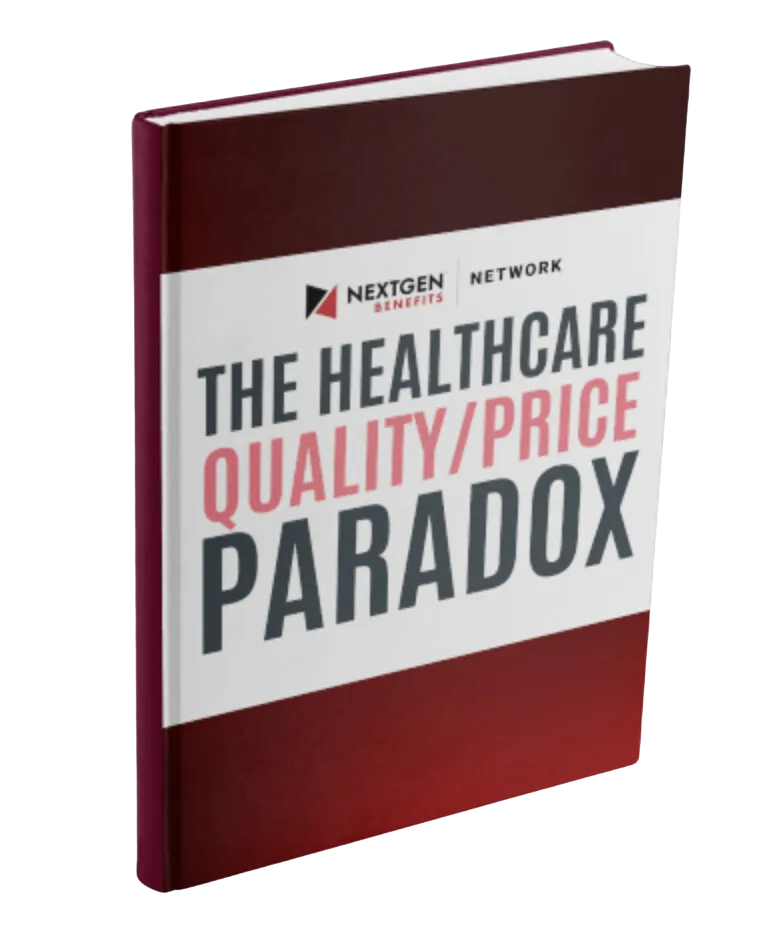
Harnessing Price Transparency to Optimize Self-Funded Employee Healthcare Programs
Navigating the complexities of healthcare costs is particularly challenging for businesses with self-funded employee healthcare programs. The advent of the Hospital Price Transparency Final Rule in 2021 and the Transparency In Coverage (TiC) Final Rule in 2022 brings new opportunities for these organizations to manage expenses more efficiently. Here's why these policies are vital for self-funded programs and how they can lead to significant savings.
Hospital Price Transparency Final Rule (2021)
This rule requires hospitals to make pricing information about the services they provide available online in a clear, accessible format. This includes standard charges for all services and items, enabling consumers to compare prices and make informed decisions.
Transparency In Coverage Final Rule (2022)
This rule mandates that health insurers and group health plans disclose detailed information on healthcare costs. This includes negotiated rates with in-network providers and historical out-of-network payments, aimed at demystifying health insurance expenses and offering greater insight into the actual costs employees might face.
According to Turquoise Health, a healthcare data company about two-thirds of hospitals have published their prices since the Hospital Price Transparency rule went into effect in January 2021, When the TiC final rules went into effect a year and a half later, group health insurance plans and plan issuers began disclosing negotiated rates for all services and items. Combined, these disclosures represent the largest collection of healthcare cost data ever published.
While all businesses and consumers can access the publicly available data to directly compare negotiated rates at thousands of hospitals across carriers and plans to help reduce their healthcare costs without compromising care quality, Turquoise sees a huge opportunity for self-funded programs to achieve savings. Their analysts estimate that employers can save 27% across 500 common healthcare services.
"It's a really powerful data set where we can see both the rates that the hospitals are putting forward as well as the payers." — Shay Forbes, head of employer solutions, Turquoise Health
Employee Benefit News called the policies “game-changers for self-funded employers,” urging employers, especially those with self-funded plans to “pinpoint which providers and hospitals will give them the most band for the buck.”
How Self-Funded Programs Can Benefit from Price Transparency
1. Informed Decision-Making for Plan Design
Self-funded programs bear the direct financial risk of healthcare claims, making cost management a top priority. Transparent pricing data allows employers to make more informed decisions when designing health plans. By understanding the cost variations across providers, businesses can structure their networks and benefits to steer employees toward more cost-effective options without compromising on quality.
2. Enhanced Negotiating Power
With access to detailed pricing information, self-funded benefits managers can strike more favorable deals with healthcare providers, ensuring that they do not overpay for services. This can result in substantial savings on healthcare expenditures, directly benefiting the company’s financial health.
3. Encouraging Employee Cost-Consciousness
Transparent pricing helps employees become more aware of the costs associated with their healthcare choices. With employees actively participating in managing costs, they better understand the financial impact of their decisions and as a result, are more likely to seek out cost-effective providers and treatments, translating into lower overall healthcare claims.
4. Promoting a Competitive Healthcare Market
Transparency in healthcare pricing fosters competition among providers, incentivizing them to offer better rates and improve service quality. Self-funded programs can benefit from this competitive environment as it drives down costs and enhances the value of care employees receive. A competitive market means that employers can access high-quality care at more reasonable prices.
5. Supporting Employee Wellness and Preventive Care
Transparent pricing can lead to lower out-of-pocket costs for employees, increasing their likelihood of utilizing healthcare services appropriately, seeking preventive care, and managing chronic conditions effectively. A healthier workforce results in fewer high-cost claims, benefiting the self-funded program through reduced expenses and improved employee productivity.
Practical Steps to Start Leveraging Price Transparency
1. Educate Employees
Ensure that employees are aware of the pricing information available and understand how to use it. Conduct workshops, provide online resources, and integrate price transparency tools into your company’s health benefits portal. Empowering employees with this knowledge helps them make cost-effective healthcare decisions.
2. Analyze and Adjust Health Plans
Use the transparent pricing data to review your current health plans. Identify areas where costs can be reduced and explore alternative providers or services that offer better value. Adjust your plan designs to incentivize employees to choose cost-effective options.
3. Collaborate with Providers and TPAs
Work closely with healthcare providers and third-party administrators (TPAs) to ensure they comply with transparency rules. Request regular updates and detailed reports on pricing information to stay informed and leverage this data in negotiations and plan design.
4. Advocate for Continuous Improvement
Support ongoing efforts to enhance price transparency in healthcare. Engage with industry groups, policymakers, and other stakeholders to advocate for policies that benefit consumers and businesses alike. Continuous improvement in transparency can further optimize self-funded programs.
Conclusion
The Hospital Price Transparency Final Rule and the Transparency In Coverage Final Rule are transformative policies for self-funded employee healthcare programs. By leveraging these regulations, benefits managers can design more cost-effective health plans, negotiate better rates, foster a competitive healthcare market, and promote employee wellness. Embracing transparency in healthcare pricing is a strategic move that aligns with both financial prudence and corporate responsibility, ultimately driving significant savings and value for self-funded programs.
To learn more about why paying more for a service or procedure doesn’t always equate to higher quality care and better understand how a self-funded program can benefit you, download The Healthcare Paradox today.

The Healthcare Quality / Price Paradox
Why Higher Cost Doesn't Always Mean Better Care
Nelson Griswold
Nelson Griswold is a NextGen Benefits Adviser.
As a NextGen Benefits Adviser, Nelson implements effective cost-containment solutions, from managing high-cost drugs to identifying high-quality physicians, from utilizing advantageous direct provider contracts to providing cost-effective virtual care programs.
With strategies and plan designs backed by one of the industry's most respected teams of subject matter experts, you can place your unwavering trust in Nelson.
With Nelson's proven expertise and established track record, you can achieve substantial cost savings compared to conventional, status quo health plans from insurance companies and brokers.

info@nextgenbenefits.com
(615) 369 0618
© Copyright 2025. NextGen Benefits and NextGen Benefits Network